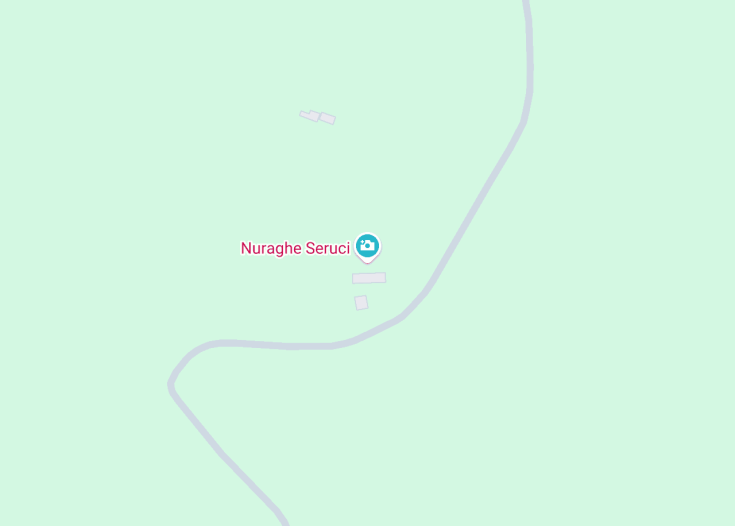Nestled in southern Sardinia, Nuraghe Seruci is a testament to the island’s ancient Nuragic civilization. This sprawling archaeological site features a central tower surrounded by a complex of additional towers, thought to have been a defensive stronghold and a community hub during the Bronze Age.
Visitors can explore the remnants of houses and religious structures, offering a unique glimpse into the prehistoric era. The site provides incredible insights into the Nuragic people’s ingenuity and their ability to organize complex communities.
For the best experience, plan your visit during spring or autumn to avoid the high summer temperatures and tourist crowds.
Consider hiring a local guide to enrich your tour with detailed stories and historical context that breathe life into the ancient stones.
Exploring the Enigmatic Nuraghe Seruci
Located near Gonnesa in Sardinia, Nuraghe Seruci stands as a monumental testament to the island’s ancient Nuragic civilization, which flourished during the Bronze Age. This archeological site, abundant with mysteries of a bygone era, offers a captivating glimpse into prehistoric life. Boasting over 100 individual structures, including the central tower and surrounding village, Nuraghe Seruci provides a panoramic view of the Sardinian landscape, enhancing its allure to both historians and tourists alike.
The site’s significance stems from its well-preserved state and the insights it provides into the Nuragic people’s architectural prowess and social structure. Guided tours available at Nuraghe Seruci enrich the visitor experience with stories and hypotheses about the lifestyle and skills of its ancient inhabitants. As one of Sardinia’s largest and most complex Nuraghe sites, it is a must-visit for anyone eager to delve into the island’s rich history and explore an integral part of its cultural heritage.
Discover the Towers and Villages of Nuraghe Seruci
At Nuraghe Seruci, the main attraction is undoubtedly the central tower, known as the “mastio.” This impressive edifice offers a strategic view of the surrounding landscape and sea, serving as a reminder of its historical defensive purpose. Visitors can explore the different levels of the tower, each revealing unique aspects of its construction and use.
Walking Tours
Guided walking tours provide deeper insights into the site’s history and are an excellent way to experience the vast complex. These tours often include visits to the remnants of the village that once thronged with life around the Nuraghe. The village houses are characterized by their circular stone bases which give a glimpse into the daily life of the Nuragic people.
A Peek into Bronze Age Artifacts
One of the most intriguing aspects of visiting Nuraghe Seruci is the display of various artifacts discovered during excavations. These artifacts, ranging from ceramic fragments to metal tools, provide invaluable insights into the daily life and skills of the Nuragic civilization.
Notably, special exhibitions sometimes feature items that highlight specific aspects of the Nuragic lifestyle, such as their trades, art, and food practices. This not only enriches the knowledge of visitors but also connects them on a human level to this ancient society.
Discover the magic of Nuraghe Seruci
Nuraghe Seruci in Gonnesa is a breathtaking destination ideal for history enthusiasts, archeology lovers, and those with a passion for exploring ancient civilizations. From solo travelers to educational groups and families, this remarkable site offers an immersive glimpse into the Nuragic civilization, renowned for its unique bronze-age structures.
Upon visiting Nuraghe Seruci, guests will encounter the mystique of prehistoric towers and remnants that tell tales of an era long passed. The extent of the ruins and the surrounding landscape not only provide a picturesque setting but also contribute to a deeper understanding of the Nuragic culture. This site is particularly captivating for those interested in the evolution of early human settlements and architectural practices in Sardinia.
Best time to experience Nuraghe Seruci
The ideal time to visit Nuraghe Seruci is during the spring and fall seasons when the weather in Sardinia is most pleasant—neither too hot nor too cold. This climate provides the perfect condition for exploring the extensive archaeological site and enjoying the scenic views without discomfort.
Annual events highlight
For those looking to enhance their experience, visiting during the annual Nuragic Culture Festival held in early May can be particularly enlightening. This event features guided tours, cultural performances, and traditional Sardinian crafts, offering visitors a richer, more engaged encounter with the ancient Nuragic civilization.
Accessibility and limitations at Nuraghe Seruci
While the historical importance and scenic beauty of Nuraghe Seruci make it a valuable destination for many, it’s important to note certain limitations.
Accessibility
Limitations
- Guided tour paths may not accommodate strollers or wheelchairs.
- Some sections may require climbing or walking over uneven surfaces.
Notes to visitors
- Bringing water and sunscreen is highly advised, as shaded areas are minimal.
- Photography is allowed, but the use of drones may be restricted.
General information
Plan your visit to Nuraghe Seruci effectively with the following details:
Location insight
Nuraghe Seruci is nestled amidst the rural landscapes of Gonnesa, a short drive from the coastline. It’s near other historical sites and natural reserves, making it a part of a richer travel circuit for visitors.
Address: SP83, 09010 Gonnesa CI, Italy
Opening hours
Summer: 9:00 AM – 7:00 PM
Winter: 10:00 AM – 4:00 PM
Closed: Mondays and public holidays
Getting to Nuraghe Seruci
Car
Driving to Nuraghe Seruci is an excellent option as it offers flexibility and ease. Free parking is available close to the site.
| Route | Distance | Travel time |
|---|---|---|
| From Cagliari | 45 miles (72 Km) | 60 minutes |
| From Oristano | 82 miles (132 Km) | 90 minutes |
| From Olbia | 193 miles (310 Km) | 3 hours 15 minutes |
Bus
Buses run from major cities like Cagliari to the nearby town, with travel times varying based on the season and provider.
Nearby Attractions
Explore other attractions around Nuraghe Seruci:
- Portoscuso Beach – 8 miles (12.9 km)
- Antiquarium Arborense – 77 miles (124 km)
- Capo Sandalo Lighthouse – 58 miles (93 km)
- Oristano St. Mary’s Cathedral – 74 miles (119 km)
- Sant’Antioco Martyr’s Basilica – 21 miles (33.8 km)
- Neptune’s Grotto – 199 miles (320 km)
- National Archaeological Museum – 84 miles (135 km)
- Asinara National Park – 204 miles (328 km)
- Cagliari Roman Amphitheatre – 47 miles (75.6 km)
- Olbia Archaeological Museum – 190 miles (306 km)
- Masua Pan di Zucchero – 9 miles (14.5 km)
- Su Nuraxi di Barumini – 70 miles (113 km)
Common questions
What is the history behind Nuraghe Seruci?
What are the unique architectural features of Nuraghe Seruci?
What artifacts have been discovered at Nuraghe Seruci?
How did Nuraghe Seruci function in the Nuragic culture?
What were the construction techniques used in building Nuraghe Seruci?
Are there any preservation efforts for Nuraghe Seruci?
How does Nuraghe Seruci compare with other nuraghic sites in Sardinia?
What is the significance of Nuraghe Seruci in understanding ancient European civilizations?
What can visitors learn from a trip to Nuraghe Seruci?
Are there guided tours available at Nuraghe Seruci?
How is Nuraghe Seruci relevant to local Sardinian culture today?
What is the best season to visit Nuraghe Seruci?

Is Nuraghe Seruci in Gonnesa worth visiting?
When considering a visit to the Nuraghe Seruci in Gonnesa, it’s essential to consider what makes it stand out. This archaeological site provides a significant glimpse into the Nuragic civilization, which is native to Sardinia and dates back to the Bronze Age. The complex is one of the largest of its kind, featuring a central tower surrounded by other circular towers.
For history enthusiasts and those interested in ancient cultures, Nuraghe Seruci is indeed a treasure. It offers an immersive experience into an ancient world that is not widely represented. However, for tourists looking for more recreational activities or modern attractions, it might not be as captivating. Accessibility and information might also be limited depending on travel arrangements, which could influence the overall experience. Overall, its appeal largely depends on personal interests in history and archaeology.









